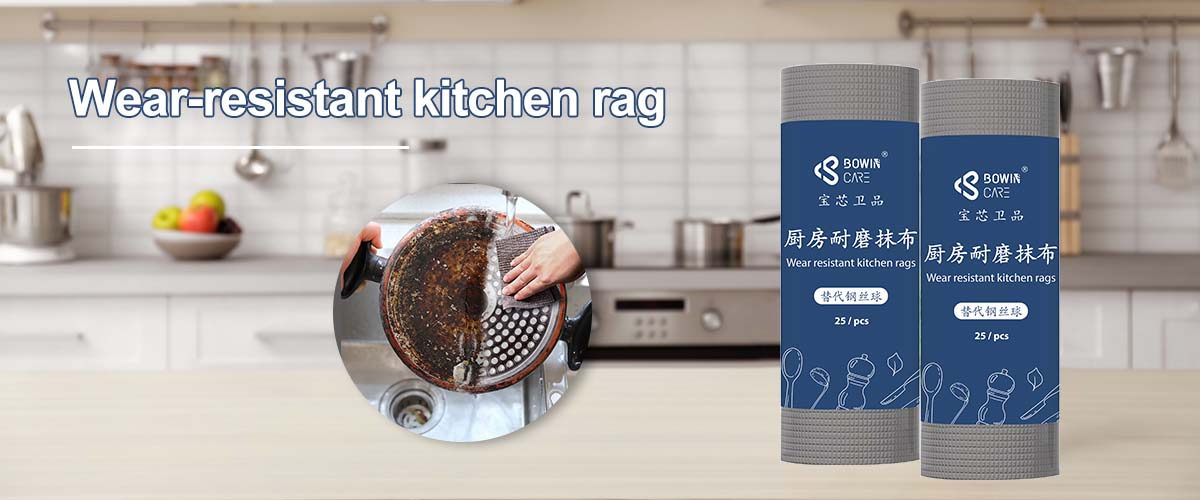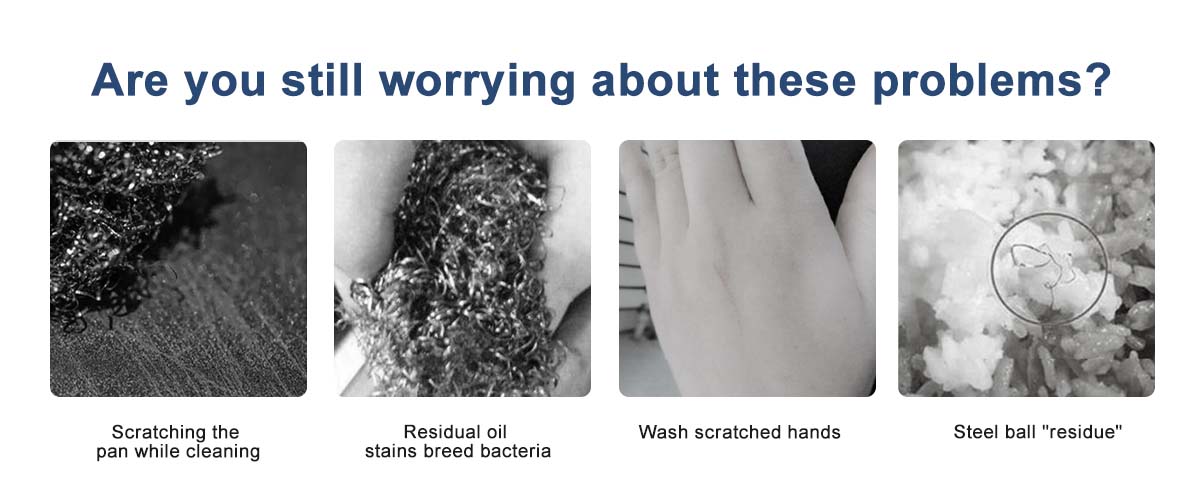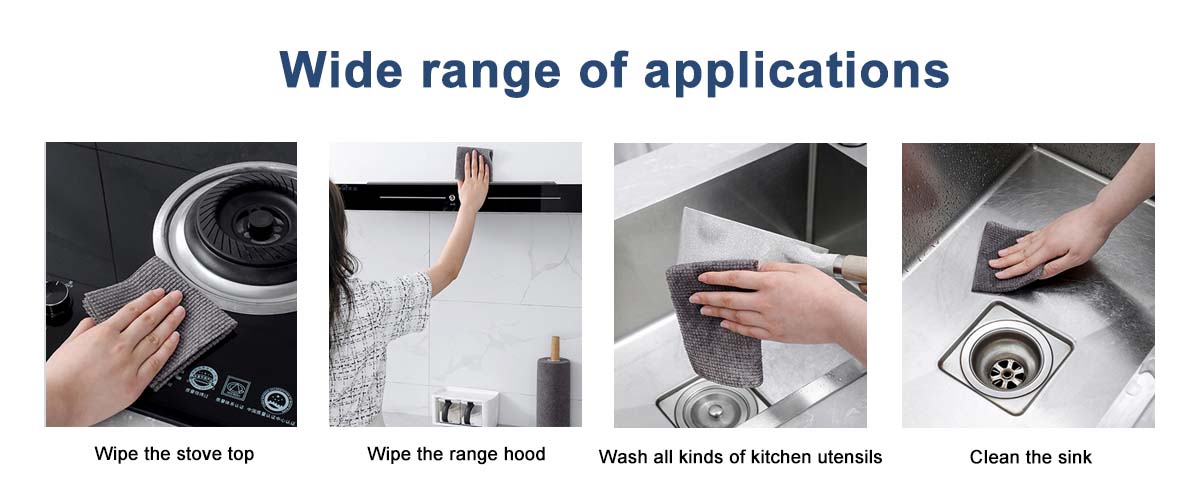Recently, a new environmentally and friendly material made kitchen rag swept the entire Chinese market, in just a few days, its reputation has been known by manufacturers all over the country, and even most online and offline retail stores have snapped up stock, behind this reason, can not live without its advantages. Revolutionary Kitchen Wear-Resistant Rag Unveiled, Promising Durability and Longevity!

In a significant advancement for household cleaning, a cutting-edge kitchen wear-resistant rag has been introduced to the market. This innovative product boasts a remarkable ability to withstand tough scrubbing, spills, and daily wear and tear, making it a game-changer for maintaining a pristine kitchen environment.

Engineered with state-of-the-art materials and technology, the wear-resistant rag is designed to last significantly longer than traditional cleaning cloths. Its durable composition ensures that it remains tough against stains, grease, and grime, while still being gentle on surfaces to avoid scratching or damage.
Kitchen rags offer several advantages, such as being reusable, eco-friendly, and cost-effective compared to disposable paper towels. They are also versatile for cleaning various surfaces and can handle tougher cleaning tasks. Additionally, using kitchen rags can reduce waste and contribute to a more sustainable lifestyle.
Early reviews from users have been overwhelmingly positive, highlighting its durability and performance in tackling even the toughest kitchen messes. As demand for practical and durable cleaning solutions continues to rise, this wear-resistant rag is expected to become an essential tool in every home's cleaning arsenal.
Households can now rejoice as this kitchen wear-resistant rag provides a cost-effective and sustainable solution to reduce the need for frequent replacements. With its longevity and effectiveness, this innovation is poised to transform the way we approach kitchen cleaning, making daily chores more efficient and hassle-free.

Range of uses for a kitchen-resistant rag. A durable kitchen rag can be used for cleaning countertops, wiping spills, drying dishes, and scrubbing surfaces. Just be sure to avoid using it with harsh chemicals that could damage the fabric. It’s material is not only environmentally friendly but also lightweight, environmentally friendly and lightweight kitchen wear-resistant cloth is versatile and ideal for various tasks in the kitchen. Its lightweight nature makes it easy to handle, while being environmentally friendly aligns with sustainable practices. You can use it for cleaning, wiping, and other kitchen chores without worrying about harming the environment.
The production process of disposable wear-resistant kitchen cloths is designed to be efficient and cost-effective due to their disposable nature. It involves similar steps to other fabric production but with certain differences. These cloths are typically made from non-woven materials like synthetic fibers. The process includes:
Material Selection: Choose durable yet lightweight materials that are resistant to wear, water, and tearing.
Fiber Preparation: If using synthetic fibers, they are processed and bonded together through methods like heat, chemicals, or mechanical processes.
Web Formation: The fibers are formed into a web-like structure through techniques like spinning, carding, or air-laying.
Bonding: The fibers in the web are bonded together to create a cohesive fabric using methods such as thermal bonding (heat), chemical bonding (adhesives), or mechanical bonding (needle punching).
Finishing: The cloth might undergo additional treatments like embossing for texture, adding wear-resistant coatings, or applying water-repellent finishes.
Cutting and Packaging: The large fabric sheets are cut into individual cloth pieces, folded, and packaged for distribution.
Quality Control: Throughout the process, quality checks ensure that the cloths meet wear-resistant and functional standards.
The development of disposable kitchen wear-resistant rags faces a few obstacles:
Environmental Concerns: Disposable products contribute to waste and environmental pollution. Developing a disposable rag that is truly environmentally friendly can be challenging due to the materials used and their impact on ecosystems.
Material Selection: Balancing wear resistance, absorbency, and other functional properties while using eco-friendly materials is a complex task. Finding materials that meet these criteria can be limiting.
Chemical Treatments: Some disposable products use chemical treatments for enhanced properties, which could raise health and environmental concerns if not managed properly.
Consumer Behavior: Encouraging consumers to use disposable products responsibly and dispose of them correctly can be a challenge. Proper disposal methods are usually overlooked.
Perceived Value: Consumers might perceive disposable products as less valuable than reusable alternatives, impacting their willingness to invest in them.
Competing with Reusables: Reusable kitchen cloths, which are becoming more popular due to sustainability concerns, provide a strong competition to disposable options.
Production Costs: Developing disposable wear-resistant cloths with desired properties while keeping production costs low can be demanding.
Limited Use Cases: Disposable cloths might not be suitable for all kitchen tasks, limiting their versatility.
Regulations and Standards: Meeting regulations and safety standards for products that come into contact with food and kitchen surfaces can be complex.
Market Perception: The perception that disposable products are contributing to a throwaway culture might affect their market acceptance.
To succeed in the development of disposable kitchen wear-resistant rags, manufacturers need to address these obstacles by focusing on sustainable materials, efficient production processes, clear communication about proper disposal, and emphasizing the value and convenience these products offer.
The practicality of disposable kitchen wear-resistant rag has always been a priority for the market, standing in the market point of view, this is undoubtedly, but we can not ignore that its ingredients are likely to have a certain impact on the environment, such as our detergent ingredients, but this impact can be improved through the day after tomorrow, please rest assured. Economic problems and environmental issues are both contradictory, but also to take into account each other, but in the current production technology of the product, it still has some room for improvement, I believe that the future human can break through a technical bottleneck, produce a clean and strong role, the material is degradable a strengthened kitchen rag!
Post time: Aug-30-2023
